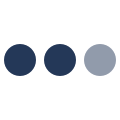Что вам понадобится
Видеоконференция с возможностью демонстрировать экран и вести запись
Анкета
Пространство для собрания
Записывающее устройство или блокнот и ручка
Анкета
Инструкции по проведению этого сценария
Большинство игр требуют лишь небольшой подготовки, а то и вовсе ее не требуют. Однако разговор с клиентом в этом смысле отличается. Отнеситесь к подготовительной работе серьезно. Тогда вы (а в конечном счете — и ваши клиенты) получите от разговора намного больше пользы.
1. Время на подготовку 90 минут
ОПРЕДЕЛИТЕСЬ С ШИРОКИМ ИЛИ УЗКИМ КРУГОМ ТЕМ
Хотите изучить общие закономерности использования продукта и дать клиенту возможность предоставить общую обратную связь? Если да, запланируйте разговор без ограничений по темам и ведите его в свободной форме. Более широкий предмет разговора может дать неожиданное представление о том, как ваш продукт или услугу видят и используют клиенты.
А если вам нужна конкретная информация, вы можете сузить область разговора и углубиться в определенную тему. Вы можете использовать разговор узкой направленности, чтобы проверить свои предположения о той или иной возможности, изучить нюансы распространенного запроса на новую функцию или сосредоточиться на проблемах, о которых сообщили клиенты.
СФОРМИРУЙТЕ КОМАНДУ ДЛЯ ПРОВЕДЕНИЯ РАЗГОВОРА
Принять участие в разговоре с клиентом может любой участник, но роль интервьюера, как правило, выполняет владелец продукта, лидер сервисной команды или кто-то еще из сотрудников, работающих на переднем плане (например, разработчик, дизайнер, оператор сервиса). Рекомендуется привлечь еще одного участника команды, чтобы он вел заметки и в целом вам ассистировал. Не пытайтесь быть одновременно интервьюером и секретарем: вы будете отвлекаться и не сможете активно слушать.
Также рекомендуется подключить к работе пассивного наблюдателя. Задача наблюдателя — внимательно слушать разговор и подмечать темы или связи, которые интервьюер и секретарь не могут уловить в силу своей занятости. Наблюдатель поможет не упустить из виду ничего важного.
ВЫБИРАЙТЕ НАИБОЛЕЕ ПОДХОДЯЩИХ КЛИЕНТОВ ДЛЯ РАЗГОВОРА
Уделите время подбору идеальных клиентов для разговора. Вам не нужен первый попавшийся клиент — вы должны убедиться, что выбранный вами человек действительно может рассказать о теме, о которой вы хотите узнать больше.
Обдумайте цели разговора и пригласите клиентов, которые внесут вклад в достижение этих целей. Стремитесь к балансу типов клиентов: фанаты, ненавистники, люди, которые почти купили продукт, но отказались, люди, которые перешли на ваш продукт от конкурента (или наоборот) и так далее.
Как можно лучше узнайте каждого возможного участника опроса, прежде чем с ним связываться, и опишите несколько деталей для справки: какие продукты или сервисы он использует, как долго он является клиентом, размер команды или компании (если это применимо), какую обратную связь он уже предоставил и т. д.
Определив клиентов для разговора, отправьте им привлекательное приглашение, в котором будут объяснены цели разговора, а также указано, сколько времени это займет и когда вы надеетесь провести разговор. Если клиент находится в вашем регионе, предложите провести разговор в его офисе: для него так будет проще, а вы сможете получить дополнительную информацию, побывав в естественной среде обитания клиента. Если вы не можете посетить клиента, пригласите его к вам в офис и устройте ему VIP-прием.
Если личный сеанс провести невозможно, может подойти видеосвязь или телефонный звонок. Электронную почту или заполнение формы также можно рассмотреть в качестве вариантов, однако это не лучший выбор. При асинхронном общении вы можете упустить тонкие детали контекста и спонтанные идеи. Поэтому сделайте все возможное, чтобы пообщаться с клиентом вживую и наладить взаимопонимание.
СОЗДАЙТЕ СЦЕНАРИЙ РАЗГОВОРА
Вас интересует не общий опрос для оценки удовлетворенности клиентов, поэтому не стоит проводить разговор без подготовки — вам нужен сценарий, даже если он будет служить лишь руководством. Для начала придумайте как минимум 20 возможных вопросов. Затем сократите список до 10 вопросов или меньше (исходя из того, что у вас есть час на разговор с клиентом). Для начала отбросьте любые вопросы, на которые клиент может легко ответить «да» или «нет».
Вопросы должны быть сосредоточены на текущем поведении, так как это хорошее средство прогнозирования будущего поведения. Помните о потенциальной предвзятости восприятия и не задавайте наводящих вопросов. Ваши вопросы должны быть сформулированы так, чтобы четко зафиксировать точку зрения клиента. Включите несколько простых вопросов, чтобы дать старт разговору и установить взаимопонимание с клиентом: как долго он работает в своей должности, как часто он использует ваш продукт или сервис, как он узнал о нем.
Если нужно сохранить детали разговора в секрете, можно заключить с клиентом соглашение о неразглашении (NDA).
ПОДГОТОВЬТЕСЬ К ДНЮ ИГРЫ
И вот наконец пришло время провести разговор с клиентом. Вы распечатали и раздали всем вопросы и информацию о клиенте. Ваше записывающее устройство заряжено. В качестве благодарности вы приготовили подарки: футболки, кружки, наклейки. В комнате для проведения разговора (если она находится в вашем офисе) наведен порядок и создана расслабляющая атмосфера.
Убедитесь, что участники команды для проведения разговора понимают свои роли, чтобы все работало, как отлаженный механизм. Секретари не должны занимать в разговоре ведущую позицию, а наблюдатели должны задавать вопросы только в самом конце.
Следующие вопросы для разговора приводятся в качестве ориентира. Вы можете изменить их в соответствии со своими потребностями и стилем.
НАПРИМЕР…
Вот пара шаблонов электронных писем, которые мы используем для приглашения клиентов на разговор.
Профессиональный совет
Секретари могут создать страницу Confluence для ведения заметок. Читайте советы по созданию страницы разговора с клиентом в блоге Atlassian.
2. Гостеприимство 5 мин
Поприветствуйте клиента и поблагодарите его за то, что он пришел (опять же: звучит очевидно, но об этом легко забыть).
Спросите, можно ли вести запись разговора, чтобы у вас все сохранилось дословно на тот случай, если секретарь не будет успевать. Заверьте клиента, что эта запись и разговор в целом предназначены только для внутреннего пользования. Вы поделитесь этими материалами со своей командой, но в остальном будете сохранять их конфиденциальность — например, не будете извлекать цитаты для рекламных целей.
3. Вопросы для разминки 10 мин
Начните с простых вопросов из подготовленного вами сценария разговора. На этом этапе ваша цель — наладить взаимопонимание. Обратите внимание на такие признаки, как жесты, мимика и тон голоса. Чувствует ли клиент себя непринужденно? Рассказывает ли он все подробности?
4. Содержательные вопросы 20 МИНУТ
Теперь погрузитесь в вопросы из вашего сценария разговора, чтобы получить интересующие вас сведения. При этом помните, что сценарий — это лишь руководство, вам не обязательно следовать ему дословно. Например, если услышите хорошую идею, можете задать дополнительные вопросы.
Не стесняйтесь потратить значительную часть времени на непринужденную беседу с клиентом о том, для изучения чего и затеяли этот разговор. Просто плывя по течению, можно получить ценную информацию, которую сможет использовать ваша команда. Даже узнать о болевых точках клиента может быть чрезвычайно полезно. Вопросы служат ориентиром: они предназначены для справки на тот случай, если разговор зайдет в тупик.
Обязательно подтверждайте ответы по ходу разговора. Чтобы убедиться, что секретарь точно уловил мнение клиента, попробуйте повторить услышанное или задать вопрос другим способом.
Подсказка
Попросите клиента показать, как он использует продукт или с какими проблемами сталкивается в повседневной работе. Сделайте скриншоты или запишите видео, чтобы затем можно было на них ссылаться и делиться ими со своей командой.
5. Вопросы наблюдателей 10 мин
Если в помещении присутствуют наблюдатели и у них есть вопросы, сейчас самое время их задать.
Вопросы должны побуждать к глубоким мыслям и анализу. «Важна ли эта возможность?» — неудачный вопрос. «Почему эта возможность полезна?» — хороший вопрос. А еще лучше спросить: «Что произойдет, если эта возможность исчезнет?». Ответ на этот вопрос либо наглядно проиллюстрирует ценность возможности, либо заставит клиента осознать, что она не так уж важна.
6. Обмен ролями 10 мин
От разговора с клиентом можно получить больше пользы, если клиент примет в нем активное участие. Прежде чем закончить беседу, дайте клиенту возможность задать вопросы. Полученная информация может вас удивить.
7. Подведите итог 10 мин
Поблагодарите клиента за уделенное время (это очень важно) и не забудьте о подарках!
Если нужны последующие действия, обсудите и запланируйте их сейчас.
НАПРИМЕР…
Для интерпретации проблем воспользуйтесь сценарием анализа пяти «почему». Вы получите примерно следующие результаты.
8. Подведите итоги разговора 30 мин
После того как вы разойдетесь, соберите участников своей команды для быстрой летучки. Спросите, что они думают о полученной от клиента обратной связи: что из нее полезно? Неожиданно? Противоречиво?
Однако не составляйте письменный отчет о разговоре сразу. Сперва переварите впечатления. Пусть проблемы и примеры использования, которые вы обсудили, уложатся в голове.
Чтобы получить максимальную отдачу от разговоров с клиентами, недостаточно просто передавать их комментарии и ваши наблюдения остальной части команды. Услышанное и увиденное нужно использовать для интерпретации проблем. Необходимо задавать вопрос «почему». Вместо того чтобы тут же переходить к решению (а клиенты могут захотеть этого во время разговора!), подумайте о наблюдаемом поведении и его причинах.
Затем свяжите эти проблемы с возможностями для развития. Выявите закономерности, появляющиеся в разных разговорах. Посмотрите, что говорят клиенты в заявках на поддержку, на форумах пользователей или в социальных сетях. Соберите подтверждающие доказательства и создайте план по решению проблем, которые вы обнаружили в ходе разговора.
Поразмыслите над полученными сведениями. Затем приступайте к письменному отчету.
Подробнее читайте в нашей статье о пирамиде разговора с клиентом.
Изучите другие сценарии
Оставайтесь в курсе
Подпишитесь на новостную рассылку с последними сценариями и советами для работы и жизни.





